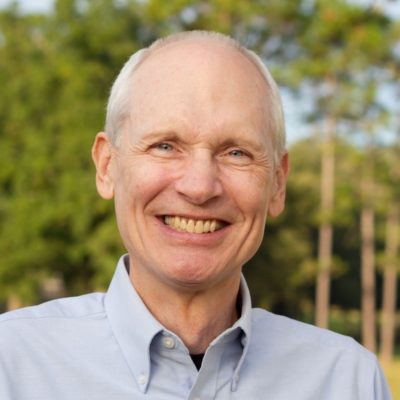You can listen to Dr. Mark Witwer’s podcast, “Teaching Christianly, part 2,” by going to the Curriculum Trak home page, or simply use this link.
What do teachers think about how faith should inform learning?
Several years ago, over 1000 K-12 teachers answered this question in an online survey. In Part 1 of this blog, I described the study and began discussing what we can learn from the teachers’ responses. In Part 2, we will continue to examine study findings that might encourage us and direct us in our efforts to teach Christianly. As mentioned in Part 1, those with access to the journal can find an extensive discussion of this research in two papers in the International Journal of Christianity and Education.
Faith-Motivated Teaching is Christian Teaching
First, we need to challenge a common assumption that teaching Christianly requires saying or doing things that one could not say or do in a public school. In On Christian Teaching: Practicing Faith in the Classroom, David Smith rejects this notion: “The goal is not to find some technique that Christians can copyright. The goal is to shape a set of practices that are as consistent as we can manage with [the grand narrative of Scripture]” (p. 130). In The Outrageous Idea of Christian Teaching, Perry Glanzer and Nathan Alleman observed, “We find that sometimes faculty [in Christian higher education] think they are failing to integrate faith and learning when in reality they simply are not conscious of the different ways their teaching is shaped by their Christan faith” (p. 101). In other words, Christian teaching is identified by what motivates it.
In this study, when invited to share an example of faith’s influence on their teaching, many teachers (59% of those who gave open responses) pointed to their use of standard pedagogical practices like group work and differentiating instruction. Also, like the Christian college and university professors mentioned above, some of these teachers were unsure whether this qualified as faith-informed teaching. Bottom line: Your faith is probably influencing what you do with students more than you realize; it is all significant, not only the distinctively Christian elements.
Still, distinctively Christian pedagogy has an important place in a Christian school, but the evidence for it was only moderate. Only just over half of teachers giving an open response reported promoting a Christian perspective on their course content and even fewer mentioned distinctively Christian teaching materials, course content, or instructional practices. It is encouraging that some of the activities mentioned were creative and robust—such as hands-on science activities that were service-oriented, interviewing senior citizens about their school experiences (to see how American culture has changed), or developing elementary classroom expectations around the fruit of the Spirit—but examples like these were uncommon.
It seems that the faith of teachers in this study was indeed influencing their teaching but there was also room for growth. (Is this not true for all of us?) However, one must interpret these results cautiously: the absence of stronger evidence is not necessarily evidence of its absence. There might be many reasons why more examples of distinctively Christian teaching were not offered in optional open responses.
Obstacles to Teaching Christianly
Do you ever feel restricted in your ability to teach Christianly? If so, you are not alone. 28% of the teachers giving open responses mentioned external or internal constraints on their ability to connect faith and learning. The most common external constraint was lack of curricular control, which was mentioned twice as often by elementary teachers, although not all were upset about it: “I teach what I am told to teach. Luckily, there isn’t anything in our curriculum that goes against my faith or beliefs.” Secondary teachers also mentioned constraints from high-stakes testing, such as Advanced Placement exams.
Internal limitations reflected choices teachers made for reasons such as limited time, not wanting faith connections to seem forced, being unfamiliar with the idea of faith influencing teaching practices, and so on. Probably, most of us have occasionally had thoughts like these: “It is more challenging to find Christian content in math”; “[Often] I can teach it without tying a Christian principle in because the content is basic in elementary. I would love to do more Bible associations but it doesn’t feel like there is time to get that point across too”; “I am ambivalent. I think most instructional strategies are neither ‘Christian’ nor ‘[unchristian].’”
Strategies can be found to address limitations like these. Brainstorming solutions with colleagues or administrators is a good first step, and if done with persistence might prove surprisingly productive.
Faith’s Influence on Course Content and Teaching Practices
For most of the modern Christian school movement’s history, the conversation about integrating faith and learning has usually focused on presenting a Christian perspective on instructional content (what we teach). In recent years, increasing attention has been paid to the formative power of what students do in the learning process and, therefore, to the importance of faith influencing teaching practices (how we teach). If you wish to investigate this topic further, I explored it in a Curriculum Trak blog (https://www.curriculumtrak.com/blog/what-is-teaching-christianly) and I highly recommend David Smith’s book, On Christian Teaching: Practicing Faith in the Classroom.
For most Christian educators, the idea of faith influencing how we teach remains unfamiliar. In a study reported in The Outrageous Idea of Christian Teaching by Perry Glanzer and Nathan Alleman, faculty in Christian higher education were more uncertain about whether their faith influenced their “teaching methods” than any other aspect of teaching examined. My findings among K-12 teachers were similar.
With a few exceptions in specific subgroups (in Part 1, we mentioned math teachers), both elementary and secondary teachers responded more strongly to items about faith’s influence on course content than on teaching methods, and the difference for both groups was statistically significant. Open responses revealed the surprise of some teachers at being asked about faith’s influence on teaching practices: “I’ve never thought of doing this intentionally”; “Instructional strategies are just that. How to get the knowledge in the kids’ heads.”
Another surprising and statistically significant finding was that elementary teachers displayed less of a gap than secondary teachers between faith’s influence on course content and teaching practices. Might those who teach young children be more aware of how day-to-day classroom practices shape students’ habits and hearts?
A Final Word
I am grateful to the busy teachers who completed the online survey and did so with such candor. By doing this, they served all of us.
Examining the study’s findings—data from many teachers who are probably much like ourselves—can be like looking in a mirror. I hope you have seen something in the findings to encourage you, to give you fresh ideas, and perhaps to alert you to something you want to improve. Remember that we are in the care of the Master Teacher, who will get us from point A to point B one baby step at a time—and probably not in a straight line!
“Those who know your name will trust in you, for you, LORD, have never forsaken those who seek you.” Ps. 9:10 (NIV)




